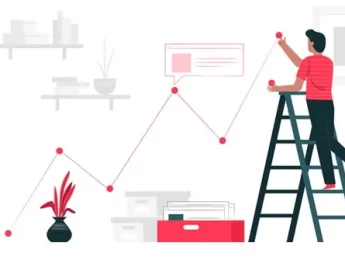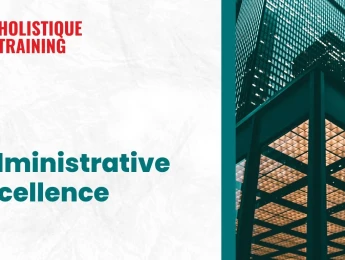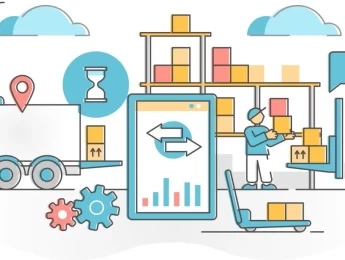Benchmarking profits, processes, and procedures is a practice widely used in all industries to determine whether growth and change management are heading in the right direction to increase performance, productivity, and, ultimately, the business's success.
Benchmarking can happen in various ways, including against competitors if the analytics are available and against previous years within the same business to monitor improvements. It’s also standard practice to reach out to customers, clients, and stakeholders to understand their opinions on your service or products and create an accurate picture of change and how the business has developed over time.
Benchmarking is an incredibly valuable tool for understanding where you are in your field compared to other businesses, helping you develop your own practices and a USP that works for your target audience. It’s also the birthplace of innovation, where business owners and leaders can understand what’s not working and make changes to head in a different direction where necessary.
Upon completion of this course, participants will be able to:
- Understand the benefits that benchmarking has to your business.
- Differentiate the different types of benchmarking and how to utilise them.
- Understand accurate data sources, metrics, and analysis tools.
- Determine which data is best used to create an accurate picture in different scenarios.
- Apply the correct methodologies to specific scenarios to create innovative outcomes.
- Design future-proofing change ideas to move with changing technologies and culture.
- Analyse changes and determine where there may be risk areas.
- Recognise mistakes and rectify methods to improve performance.
This course has been developed for anyone directly involved in change management or business development to help them move forward using benchmarking techniques. It would be most beneficial for:
- Business Owners
- Directors
- Operations Managers
- Change & Control Managers
- Project Planners
- IT Leaders
- Supervisors
- HR Professionals
- Finance Professionals
- HSE Leaders
- Quality Managers
This course uses a variety of learning styles to ensure maximum understanding. Participants will view presentations and participate in interactive discussions regarding benchmarking techniques and their varied benefits.
They will then discover how to apply tools and changes within their own organisation through group discussions and practical activities regarding data collection and risk identification. They will be presented with real-world cases to understand how to successfully make changes and developments to performance through process modification, employee training, and technology updates to stay profitable and ahead of their direct competition.
Day 5 of each course is reserved for a Q&A session, which may occur off-site. For 10-day courses, this also applies to day 10
Section 1: Why Does Performance Management Matter?
- Measuring the performance of systems, staff, and projects.
- How performance monitoring can help with your future.
- Performance against profits.
- How Key Performance Indicators (KPIs) Work.
- Understanding the Metrics that You Aim to Measure.
- The History of Performance Measurement.
- Using Benchmarking to grow, develop, and transform.
Section 2: How to Benchmark Your Success
- Benchmarking terminology.
- Understanding strategic, performance, and process benchmarking and change implementation.
- How to determine the most appropriate benchmarking approach.
- Identification of most appropriate benchmarking projects.
- Understanding how minor changes can make a big difference - the 80/20 method.
- Creating Lean Processes.
Section 3: How to Manage a Benchmarking Project
- How to plan out a project based on benchmarking.
- Benchmarking maps and analysis.
- Gaining buy-in from teams surrounding change.
- Project plan phases and implementation.
- Metrics based on competitors, employees, and customers.
- Project management and measurement against KPIs.
- How to roll back a change that hasn't worked.
Section 4: Developing Accurate Data Measurement Tools
- Data usage and abuse - how to use your figures ethically and constructively.
- Key stats and where to find them.
- Standard deviation and variance and their importance.
- CATWOE and RCA.
- The 5 whys and their cause and effect.
- Collecting accurate information.
- Histograms and run charts.
Section 5: Exploring Different Data Sources
- Internal vs. external benchmarking.
- Benchmarking against competitors.
- Benchmarking against previous years.
- Feedback from internal and external sources.
- Profit and loss benchmarking.
- Identifying pain points in the process and organisation.
Section 6: Identifying Risk Areas to Change
- Journey mapping.
- DMAIC and Six Sigma
- Poka-Yoke approach.
- Auditing and accurate record keeping.
- Revisiting areas for business continuity.
- Understanding profit margins against change.
- IT backup and system repair.
Section 7: Aiming for Continuous Improvement
- Personal action planning.
- Legal and ethical issues and how to meet your obligations.
- Kaizen and continuous improvement.
- Project tracking and change requirements.
- Feedback and development.
Upon successful completion of this training course, delegates will be awarded a Holistique Training Certificate of Completion. For those who attend and complete the online training course, a Holistique Training e-Certificate will be provided.
Holistique Training Certificates are accredited by the British Assessment Council (BAC) and The CPD Certification Service (CPD), and are certified under ISO 9001, ISO 21001, and ISO 29993 standards.
CPD credits for this course are granted by our Certificates and will be reflected on the Holistique Training Certificate of Completion. In accordance with the standards of The CPD Certification Service, one CPD credit is awarded per hour of course attendance. A maximum of 50 CPD credits can be claimed for any single course we currently offer.
- Course Code MG2-122
- Course Format Classroom, Online,
- Duration 5 days














